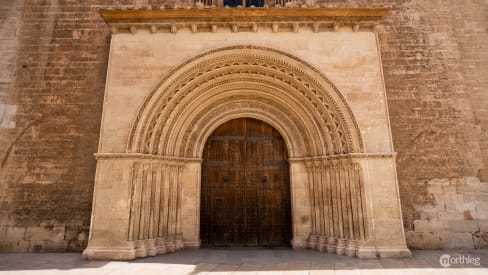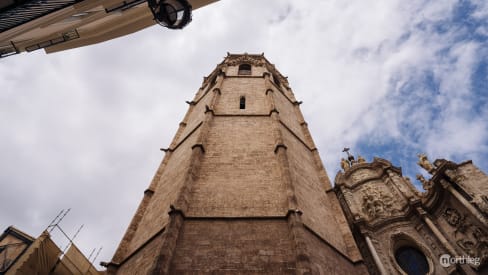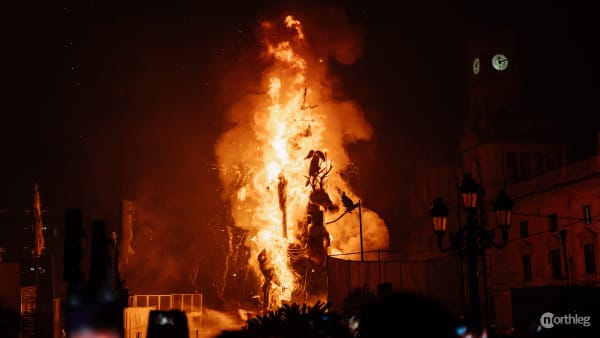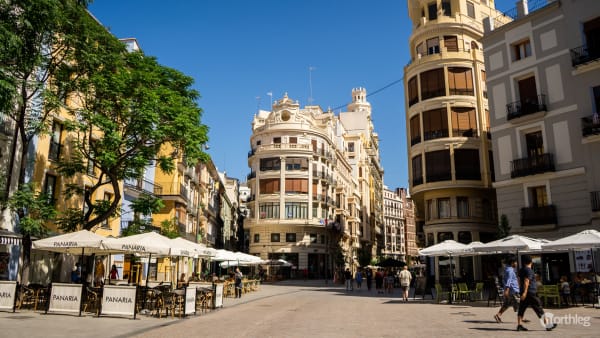Curiosities
Curiosities
Do you know why Valencians call the Cathedral la Seu? Or the reason we use the word cathedral at all? In this curiosities section, you’ll find out why. You’ll also be able to read about the Holy Grail and how it got here, or the Cathedral’s past as a Mosque.
The Holy Chalice
The Holy Chalice is probably the most famous and sought-after Christian relic to date. According to religious tradition, the Chalice is the cup from which Jesus drank at the Last Supper.
The Last Supper story and the goblet are referenced countless times in literature, art, and popular culture. The very ritual of the Eucharist in Christian churches, where wine and a chalice are used, is a reference to this incident.
The Holy Chalice’s fame is mainly due to its great allegorical value, the pursuit of union with God, and its symbolic reproduction in the Eucharist.

Another contributor to the goblet’s popularity is also its association with the Holy Grail, a magical item in Arthurian literature . This prominence in popular culture has made it so that the two terms are commonly used interchangeably.
How it looks
The cup you can see in the Cathedral’s Capilla del Santo Cáliz is made up of three different parts, the Holy Chalice itself at the top, the foot of the cup, and the decorations.
The Holy relic would be the polished red agate goblet at the top. Archaeological studies tell us that the origin of the relic can be traced back to a workshop in Egypt, Syria or Palestine itself, between the 4th century BC and the 1st century AD.

The second part, the foot of the cup, is an Egyptian or Caliphal vase from the 10th or 11th century, added to the cup around the 12th century. The pearls and precious stones that ornament the Chalice were likely added much later, in Spain.
How it got to Valencia’s Cathedral
The story of how the Chalice got to Valencia’s Cathedral is also heavily debated, but the most popular is the following. The goblet used by Jesus was taken from Jerusalem to Rome by St Peter, where it stayed in the hands of the various ruling popes.
In 258, the Pope’s deacon took the goblet to Huesca (in Aragón) to protect it from persecutors. The cup was then passed from hand to hand, and hidden in various monasteries and cities of the region throughout the centuries until, in the 1400s, it arrived in Valencia in the hands of the King Alfonso V of Aragon.

Finally, in 1437 the King passed the Holy Chalice back to the Christian Church in Valencia as a form of debt payment. Since then, it has remained in the city, with the exception of the Spanish Civil War. During that period, the Chalice had to be removed from the Cathedral for safekeeping purposes on two occasions.
The rejection of a Muslim past
Like many other buildings in Valencia (and throughout Spain), the Cathedral has a Muslim past, dating back to the Moorish rule, which lasted from 718 until 1238 in Valencia.
Following the reconquest, the Christians were eager to erase signs of a Muslim presence and character in the city. Imposing a strong Christian identity obviously had to start with the churches, and first among them the Cathedral. We can of course sense this in the fact that very little remains of the Great Mosque, but we can also find more subtle clues if we look closer.
One of these clues can be found in the orientation of the Cathedral. Mosques are oriented towards Mecca, as this is the direction of prayer. In Valencia, this means that a Mosque needs to be oriented south-east, as the Great Mosque in fact was. As you might notice, Valencia’s Cathedral is oriented northeast instead.
This is because the Christian architects decided to tilt the orientation of the church, using the foundations of the Mosque as transept (the crossing section), and orienting the main body of the church (the nave) towards the northeast. In doing so, they were rejecting and redacting the Islamic past of the building, while still (somewhat) keeping the Christian tradition of orienting a Church towards the east.

Another clue of this erasure is in the style of the Almoina Door (also known as Puerta del Palau). This was the first one of the Cathedral’s entrances to be built, in Romanesque style (the most popular architecture form in Europe until the 12th century).
The problem is that none of the other early components of the Cathedral seems to be built in this same style. They rather present a Gothic taste (which substituted the Romanesque style in the 13th century).
There are a couple of hypotheses as to why this was. The first one has to do with the fact that for 24 years before the Cathedral proper was built, the Great Mosque that stood in its place was used by Christians as a makeshift church.
Before construction on the current Cathedral had begun, the Christians would have been eager to impose a Christian identity on the building. To do this, they rushed to open up the qibla wall, where the mihrab stood (the Mecca-facing wall). This opening in the wall could then become a Christian entrance to a now Christian building, and would thus have been built before any of the other elements in the Seu.
The names
The Cathedral of Valencia, like many other Cathedrals in Cataluña and Aragón, is known as the Seo (or Seu, in Valencian).
These words come from the Latin word sedes, meaning seat. This is not just intended in the physical sense, as “chair”, but also in a broader sense of “main building”, “headquarters”. This came from the idea that those who ruled sat on a throne. Hence then, the name for the main residence of the bishop, a seat, a Seu.
Funnily enough, the origin of the word cathedral has the same exact meaning. It comes from the Greek word καϑέδρα (cathedra), meaning chair, seat, or post.

The Cathedral’s bell tower (Campanar Nou de la Seu, in Valencian) is known as Micalet (Valencian) or Miguelete (Spanish). The name derives from the bell that is placed at the top of the tower, called Miquel (or Miguel, Spanish correspondent of Michael). The bell itself was named after the saint that was supposed to protect the city from evils and disasters.















